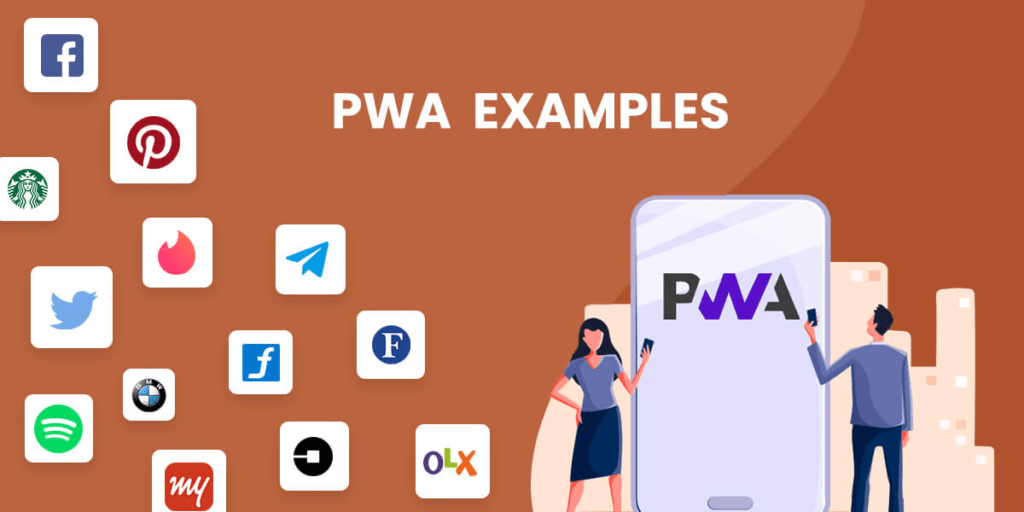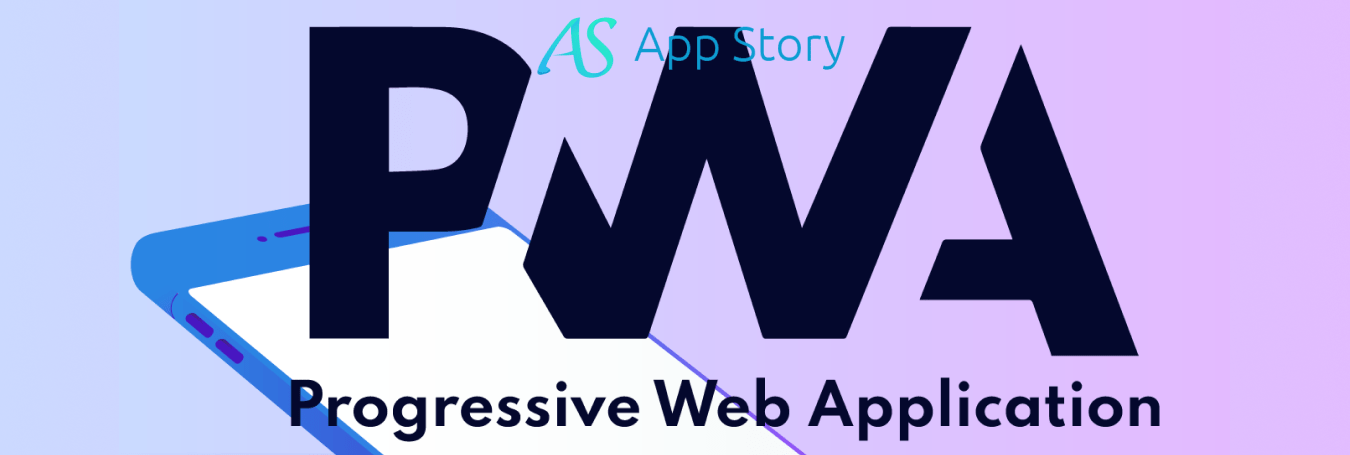Progressive Web Apps (PWA) are revolutionary as they create better experiences on mobile web, therefore changing our perceptions built on web applications. The progress has been made possible by recently standardized features in JavaScript and web browsers. Developers have the duty bestowed on them to investigate whether progressive web apps are adequate for use or not. They also have to ensure that user experience (UX) is equally good with native apps.
The following are items you should run through every time you create a PWA.
Avoid The Most Common UX Mistakes That Can Ruin Your Progressive Web App
When designing a PWA, you will realize that it is closer to creating a native mobile app as opposed to a conventional responsive web app. Be keen therefore not to make the same mistakes that conventional web designs face when they are being redesigned for mobile.
Usage Of System Fonts
You should be aware that users are comfortable more so with what they are familiar with including fonts. They will be more comfortable using your Progressive Web App if they can change their style to match the OS they are using. The font alone can be a deal-breaker or sealer. Ensure that you enable and allow for such flexibility for the app by implementing different menus and buttons on different platforms.
Apart from providing such options, you can decide to use the system’s preferred font, which will be different for IOS, Windows, and Android, among others. The trend is notable in use by big names like Microsoft, who used Segoe, and they influenced others such as Mozilla (Fire Sans), Google (Roboto) and Apple (San Francisco). Including system fonts in your app development assist you and the audience to be more comfortable.
Allow The Content To Be Shared Easily
It is common for Progressive Web Apps that the current URL is never easily accessible. Ensure, therefore, that users can share what they are looking for without struggling. Make it simple and easy for them so that they enjoy their experience. Include a share button, which enables users to share what they are viewing easily and quickly. They can copy the URL to the clipboard and share it to networking sites.
Be Keen That The Buttons And ‘Non-Content’ Are Not Selectable
An excellent example of this is chrome, which will select even with a single tap on the screen every time. It goes further to create a bug that taps on buttons a ‘non-content’ which now act as selections, and they keep being selected. It inconveniences users and deters them from having a good experience in apps and websites. Ensure that you fix such issues.
Retain Scroll Position On The Previous List Page
It applies when the user presses back from a detail. Users sometimes need to pick items maybe in a list to view its contents in details. When they are done and need to tap back to the previous page, they should not be brought back to the top of the list, but to the position, they were at, that is, the same scroll position. The position they were at before they pressed or tapped on an item to view. It enables the user to have the best experience. It is tiring and almost annoying when browsing a list of items, products or articles when pressing back takes you back to the top of the list repeatedly.
Smooth And Fast Screen Transitions
Progressive Web Apps should make the user feel as though the app is locally installed on the device. Blocking on the network must therefore not slow down transitions in screens. It is common that when a user taps on a linking a web app they have to wait first, looking at the present screen and then they are suddenly taken to a new screen. It should be looked into t avoid such a delay and then sudden activity as it takes away the feeling of the Progressive Web App being part of the device the user is using.
Enhance Load Performance
Google recommends the following techniques to ensure that you provide a rich web experience that is load performance free.
- The PRPL Pattern
It is a pattern meant for structuring and serving PWAs. It optimizes more straightforward development and deployment, and it stands for
-Push critical resources for the initial URL
-Render initial route
-Pre-cache remaining routes
-Lazy-load and create remaining routes on demand
The pattern is beneficial in that it enables minimum time to interaction on using and mobile devices as well as ensuring caching efficiency overtime.
- Service Worker Caching
It is a script that your browser can run in the background despite the page being closed. It enables your PWA to serve responses almost instantly, even on sluggish networks. Service workers contribute a lot in allowing native app features like off-line capabilities, background synchronizing, and push notifications possible on PWAs.
- Server-Side Rendering
It helps PWAs and especially the users to get Content faster, especially when JavaScript fails or is disabled. Search engines index it easier too.
Progressive Web Apps are a channel for developers to provide the best experience for users on their devices, and these recommendations help them to achieve these goals.

10 Amazing Benefits of Progressive Web Apps
Progressive Web Apps (PWAs) are revolutionizing the way users interact with websites by combining the best features of web and mobile applications. Here are ten amazing benefits of PWAs that make them a compelling choice for developers and businesses alike:
1. Enhanced Performance
PWAs load quickly and provide a seamless user experience even on slow networks. By caching assets and utilizing service workers, PWAs ensure that users have a fast and smooth experience, reducing bounce rates and improving engagement.
2. Offline Functionality
One of the standout features of PWAs is their ability to work offline or in areas of low connectivity. Through the use of service workers, PWAs can cache essential resources, allowing users to continue browsing and interacting with the app even without an internet connection.
3. Improved User Engagement
PWAs offer features like push notifications, which keep users engaged and informed about updates, offers, and important information. This capability enhances user retention and boosts re-engagement rates.
4. App-Like Experience
PWAs provide a native app-like experience with smooth animations, fast responses to user interactions, and an immersive interface. They can be installed on the user’s home screen, making access as easy as using a traditional mobile app.
5. Cross-Platform Compatibility
PWAs are designed to work across multiple platforms and devices, including desktops, tablets, and smartphones. This cross-platform functionality ensures a consistent user experience regardless of the device being used.
6. Reduced Development Costs
Developing a PWA can be more cost-effective than building separate native apps for different platforms (iOS, Android, etc.). With a single codebase that works across all platforms, businesses can save time and resources on development and maintenance.
7. SEO Benefits
PWAs are discoverable by search engines, which means they can be indexed and appear in search results just like traditional websites. This improves visibility and can drive more organic traffic to the app.
8. Secure
PWAs are served over HTTPS, ensuring that all communications between the user and the server are secure. This security measure helps protect user data and builds trust with users.
9. No App Store Approval Needed
Unlike native apps, PWAs don’t require approval from app stores. This means developers can deploy updates instantly without waiting for approval, ensuring users always have access to the latest features and improvements.
10. Increased Conversion Rates
Many companies have reported significant increases in conversion rates after switching to PWAs. With faster load times, offline capabilities, and an app-like experience, PWAs remove barriers to purchase and encourage users to complete their transactions.
Progressive Web Apps offer a powerful combination of performance, engagement, and flexibility, making them an ideal solution for businesses looking to enhance their online presence and provide a superior user experience. By leveraging these benefits, you can ensure that your app meets the demands of modern users while delivering exceptional value to your business.

20+ Progressive Web App Examples That Will Inspire You to Build Your Own in 2024
Progressive Web Apps (PWAs) are transforming the way we experience the web. With their ability to combine the best of web and mobile apps, they offer seamless performance, offline capabilities, and enhanced user engagement. If you’re considering developing a PWA in 2024, here are over 20 inspiring examples to fuel your creativity.
1. Twitter Lite
Twitter Lite is a remarkable PWA that offers a fast, data-efficient version of the social network. It loads quickly even on slow connections and provides a smooth user experience similar to the native app.
2. Pinterest
Pinterest’s PWA significantly improved their performance metrics. With faster load times and a streamlined interface, the app offers an engaging experience even on low-bandwidth networks.
3. Starbucks
Starbucks’ PWA allows customers to browse the menu, customize orders, and add items to their cart, even without an internet connection. This functionality ensures that the user experience remains uninterrupted.
4. Uber
Uber’s PWA is designed to be lightweight and fast, allowing users to request rides on any device, even in areas with limited connectivity.
5. Instagram
Instagram’s PWA is optimized for mobile and delivers a near-native app experience, with features like photo uploads and notifications, making it a perfect example of a highly functional PWA.
6. Forbes
Forbes’ PWA offers a fast-loading, app-like experience with offline reading capabilities and push notifications, ensuring that users stay engaged with content even when offline.
7. AliExpress
AliExpress’ PWA improved user engagement and conversion rates by offering a fast, reliable, and immersive shopping experience.
8. Tinder
Tinder’s PWA is a lightweight version of the app, designed to deliver a fast and reliable experience on any device, making it accessible to a broader audience.
9. Flipkart
Flipkart’s PWA, Flipkart Lite, offers a smooth, app-like shopping experience with faster load times and push notifications, enhancing user retention and engagement.
Do you use PWA? Let’s discuss how to optimize this feature. Let’s talk
10. The Weather Channel
The Weather Channel’s PWA provides real-time weather updates, alerts, and offline access to weather maps, ensuring users stay informed no matter the connection quality.
11. OLX
OLX’s PWA ensures quick load times and a seamless user experience, even on low-end devices and slow networks, making it easier for users to buy and sell items.
12. MakeMyTrip
MakeMyTrip’s PWA offers a fast, reliable travel booking experience with offline functionality and push notifications, ensuring users can book trips with ease.
13. Lancôme
Lancôme’s PWA delivers a high-performance, engaging shopping experience with push notifications and offline capabilities, resulting in higher user engagement.
14. 9GAG
9GAG’s PWA offers a fun, app-like experience with faster load times and offline access to content, ensuring users can enjoy memes and videos anywhere.
15. Washington Post
The Washington Post’s PWA provides a fast-loading, app-like experience with offline reading capabilities and push notifications to keep users updated.
16. Yummly
Yummly’s PWA offers a rich, interactive cooking experience with recipe recommendations, offline access, and an intuitive interface that rivals native apps.
17. Spotify
Spotify’s PWA is a lightweight version of the music streaming service, designed to provide a fast and responsive experience on any device.
18. Trivago
Trivago’s PWA delivers a fast, reliable hotel search experience with offline capabilities and push notifications, enhancing user engagement.
19. Treebo
Treebo’s PWA offers a seamless hotel booking experience with offline functionality and push notifications, ensuring users can book accommodations easily.
20. Google Maps Go
Google Maps Go is a lightweight PWA that offers core functionalities of Google Maps with reduced data consumption, making it ideal for users with limited connectivity.
21. Jumia
Jumia’s PWA delivers a fast, reliable shopping experience with offline capabilities and push notifications, enhancing user satisfaction and engagement.
These examples demonstrate the power and versatility of PWAs, offering enhanced performance, offline capabilities, and improved user engagement. As you plan to build your own PWA in 2024, draw inspiration from these successful implementations to create a robust, user-friendly app that meets the demands of today’s mobile-first users.
PWA for E-Commerce Projects: A Trend or a Must-Have Feature?
The potential for expansion in the e-commerce sector has significantly increased with the arrival of Progressive Web Apps (PWAs). PWAs are a powerful setup that delivers app-like performance across multiple devices, boosts online conversions, and encourages mobile web engagement.

Why PWAs Are Essential for E-Commerce
Enhanced User Experience: PWAs offer a seamless, app-like experience on the web, which is crucial for retaining users and improving their overall satisfaction. The smooth performance and intuitive interface can lead to higher user engagement and loyalty.
Offline Functionality: With PWAs, users can browse products and make decisions even without an internet connection. This offline capability ensures that customers remain engaged with your store, regardless of their connectivity.
Faster Load Times: PWAs are designed to load quickly, even on slow networks. This speed enhancement reduces bounce rates and ensures that users have a positive shopping experience, leading to higher conversion rates.
Push Notifications: Push notifications are a powerful tool for re-engaging users. They can be used to inform customers about new products, special offers, and personalized recommendations, driving repeat visits and purchases.
Cross-Platform Compatibility: PWAs work seamlessly across various devices and platforms, ensuring that all users, regardless of their device, have a consistent and engaging experience.
Successful Implementations of PWAs in E-Commerce
Several well-known corporations have successfully implemented PWAs, yielding impressive results:
- Lancôme: The beauty brand saw a 17% increase in website conversions after implementing push notifications in their PWA.
- Trivago: The hotel booking platform reported a 97% increase in click-outs to their offers and a 150% hike in user engagement after launching its PWA.
- BMW: The auto manufacturer launched a PWA that loaded four times faster and led to a 49% boost in website visits, followed by a 50% increase in its mobile user base.
The Future of E-Commerce with PWAs
PWAs for e-commerce are more than just a trend; they are becoming a must-have feature for modern online stores. These applications bridge the gap between native mobile apps and online experiences, enhancing the capabilities of a web browser and allowing users to easily buy things online. With their ability to provide a superior user experience, increase engagement, and drive conversions, PWAs are set to play a critical role in the future of e-commerce.
Embracing PWAs can give e-commerce businesses a competitive edge, ensuring they meet the evolving expectations of tech-savvy consumers and capitalize on the growing mobile commerce market.
How Much to Invest in the Development of a Progressive Web Application?
Investing in the development of a Progressive Web Application (PWA) involves several stages, each with specific time and cost requirements. Here is a breakdown of the typical development stages, estimated hours, and costs associated with building a PWA.
1. Project Setup, Preparation, and UX/UI Design
- Estimated Hours: 280 hours
- Cost: $11,200
This stage includes initial project planning, setting up the development environment, and designing the user experience (UX) and user interface (UI). A well-thought-out design is crucial for creating an engaging and intuitive app.
2. Development
- Estimated Hours: 640 hours
- Cost: $25,600
The core development phase involves coding the application, integrating functionalities, and ensuring that the PWA adheres to best practices for performance and security. This stage includes front-end and back-end development.
3. Testing and Launch
- Estimated Hours: 240 hours
- Cost: $9,600
Comprehensive testing is essential to identify and fix bugs, ensure compatibility across different devices and browsers, and optimize performance. Once testing is complete, the app is prepared for launch.
4. Deployment and Distribution
- Estimated Hours: 80 hours
- Cost: $3,200
Deploying the PWA involves setting up the hosting environment, configuring servers, and ensuring the app is accessible to users. Distribution includes making the app available for download and use, potentially via a company website or app store.
5. Technical Documentation
- Estimated Hours: 40 hours
- Cost: $1,600
Creating detailed technical documentation is important for future maintenance and updates. This documentation helps developers understand the codebase, dependencies, and any specific configurations used in the project.
Total Investment
- Total Estimated Hours: 1,280 hours (approximately 7.5 months)
- Total Cost: $51,200
Investing in the development of a PWA can bring significant benefits to your business, including enhanced performance, improved user engagement, and broader reach across different devices and platforms. By understanding the costs and time involved, you can better plan and allocate resources to ensure a successful PWA launch.
FAQs on 10 Best Practices for Building Progressive Web Apps.
What is a Progressive Web App, and why should I develop one?
A Progressive Web App (PWA) is a web application that offers an app-like experience to users. PWAs combine the best of web and mobile apps, providing features like offline access, push notifications, and home screen installation. Developing a PWA can help companies increase user engagement, improve conversion rates, and reduce bounce rates.
What technologies are necessary to develop a Progressive Web App?
To develop a PWA, you should utilize modern web technologies such as HTTPS, Web App Manifest, and Service Workers. These technologies ensure your app is secure, can be installed on devices, and works offline. Frameworks and libraries like Angular, React, and Vue.js are commonly used to build PWAs efficiently.
What are the primary features of a PWA?
The key features of a PWA include:
Offline Access: Users can access content without an internet connection.
Responsive Design: PWAs work seamlessly on various devices and screen sizes.
Faster Load Times: Optimized performance ensures quick loading, enhancing user experience.
Add-to-Home Prompt: Users can install the PWA on their home screen for easy access.
Secure Connection: PWAs use HTTPS to ensure a secure connection.
Push Notifications: Engage users with timely updates and notifications.
By incorporating these features, PWAs provide a robust and engaging user experience similar to native apps.
Conclusion
So, as you can see, there’s a lot to gain by using Progressive Web Apps (PWAs). They offer a plethora of benefits, including enhanced user experience, offline functionality, faster load times, push notifications, and cross-platform compatibility. These features make PWAs a powerful tool for e-commerce businesses looking to improve user engagement, boost conversions, and reduce bounce rates.
You have a lot of options to choose from when considering PWAs, depending on factors like product specifications, company goals, and target market. Whether you aim to improve mobile web engagement, save on development costs, or provide a seamless user experience across devices, PWAs offer a versatile and cost-effective solution.






 United States
United States United Kingdom
United Kingdom India
India Canada
Canada Singapore
Singapore



































